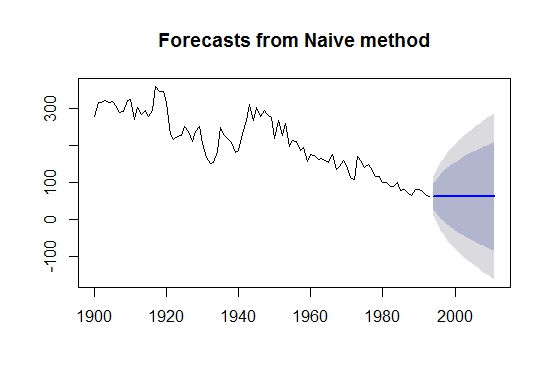@Maya, I would recommend an online forecasting text book if you are specifically interested in time series forecasting methods. It has a section on naive forecasting
There are two types of naive methods, for seasonal and non-seasonal data. programming naive models is one of the simplest models that you can do either in R or any other program. For non-seasonal data, last value is your forecast for all the future horizon. for seasonal data, the forecast for future period is same as whatever value is in the historical data during the same period (Example forecast for Aug 2015 is same value as actual value for Aug 2014.)
In R specifically you can perform naive forecast (both non seasonal and seasonal) using forecast package. The code snippet is shown below. I have also shown how the forecast looks like for non-seasonal and seasonal data plots.
library("forecast")
library("fma")
## Example Data Non Seasonal from fma package
nsdata <- eggs
plot(nsdata)
## Forecast naive method for seasonal data for 18 years
nsdata.f <- naive(nsdata,h=18)
plot(nsdata.f)
## Example data for Seasonal data from fma package
sdata <- airpass
plot(sdata)
## Forecast naive method for seasonal data provides you 12 months of forecast
sdata.f <- snaive(sdata,h=12)
plot(sdata.f)




